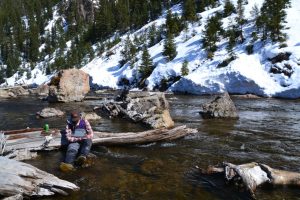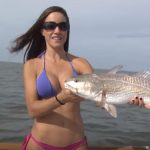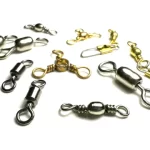Braving the icy chill of winter to fish for trout can feel daunting. The allure of a warm house is hard to ignore, especially when the fishing tends to slow, and icy water threatens to chill your hands. Yet, for those willing to face the cold, winter fishing offers unique rewards and opportunities. Trout may be less active, but with the right techniques, they can still be enticed to strike.
Beyond the fishing itself, winter angling has other perks. For one, the solitude is unmatched. With many anglers opting for warmer pastimes or fly-tying indoors, you’re likely to have stretches of river all to yourself. Winter also provides a chance to refine technical fly-fishing skills, offering a unique challenge. Here are eight essential tips to make the most of your winter trout fishing experience.

1. Slow Down
In cold weather, trout activity slows significantly. To match this, your presentation needs to be deliberate and unhurried. Trout tend to hold steady, feeding opportunistically on food that drifts right by them. Dead drifting nymphs is the most effective approach, ensuring your fly passes close enough to be an easy meal. Aggressive techniques like stripping streamers or swinging wet flies quickly are less effective during winter’s chill.
2. Target Deep, Slow Water
Trout seek out calm, energy-efficient areas in winter, favoring deep, slow-moving water over faster currents. Look for pockets of slow water adjacent to faster flows, where food drifts past without requiring trout to expend much energy. Fishing deep in these zones increases your chances of success.
3. Downsize Your Gear
Winter trout often feed on small insects like midges and stoneflies. Using smaller flies is key to matching the available food sources. Additionally, opt for light tippet and smaller indicators to prevent spooking fish in the clear, crisp water typical of winter. Downsizing across the board enhances your chances of landing hesitant fish.
4. Focus on Tailwaters
Tailwaters, fed by consistent dam releases, maintain stable temperatures year-round, creating conditions closer to summer fishing. These waters often harbor active trout even in winter. Familiarity with local tailwaters can give you an advantage, though be prepared to share these spots with other dedicated anglers seeking the same benefits.
5. Learn Winter Dry Fly Patterns
While nymphs dominate winter fishing, dry flies like midges and Blue-Winged Olives (BWOs) can still be effective during hatches. If fish are rising, these patterns can yield results. To improve visibility, consider fishing a tandem setup with a larger dry fly as an indicator paired with a smaller midge dry fly.
6. Start Late
In winter, trout activity picks up as the day warms. There’s no need to rush out early in freezing conditions. Sleep in, enjoy a leisurely morning, and hit the water in late morning or early afternoon when both trout and their food sources become more active.
7. Choose Warmer Days
Fishing on warmer days increases your chances of finding active trout. A day or two of mild weather following a cold snap can lead to a feeding frenzy, as trout take advantage of improved conditions. Planning your trips around favorable weather can significantly boost your success rate.
8. Experiment with Streamers
If you’re a streamer enthusiast, adapt your tactics for winter conditions. Instead of stripping streamers quickly, try dead drifting them under an indicator as you would with a nymph. While many trout may prefer smaller prey, some won’t pass up the opportunity for an easy, large meal.
Winter trout fishing demands patience, skill, and an ability to adapt to slower, more technical conditions. By employing these tips, anglers can overcome the challenges of the cold season and enjoy the serenity and rewards of winter waters. Bundle up, venture out, and embrace the unique opportunities that winter trout fishing offers.
Image/Source: fishuntamed





